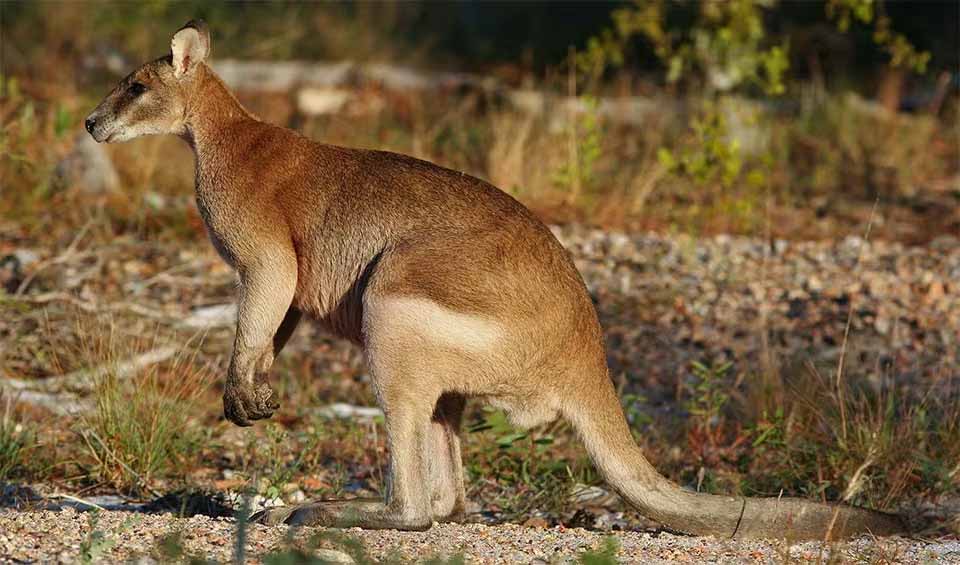Macropus – Kangaroos & wallabies
Home of the largest extant kangaroos
These remarkable animals are symbols of Australian wildlife and play significant roles in their ecosystems. Kangaroos and wallabies are distinguished by their muscular hind legs, large feet, and powerful tails, all of which are adaptations that enable their unique mode of locomotion—hopping.
Kangaroos and wallabies exhibit a range of sizes, from the smaller wallabies and pademelons to the larger kangaroos, which can stand over 2 meters (6 feet) tall. Despite their size differences, all members of the Macropus genus share common physical characteristics, including short hair, small forelimbs compared to their hindlimbs, and long, strong tails that provide balance and support while moving.
These marsupials are native to Australia and New Guinea, and certain species have also been introduced to New Zealand. They inhabit various environments across these regions, from grasslands and deserts to forests and savannas, demonstrating their adaptability to different ecosystems. The kangaroo’s ability to cover large distances through hopping allows them to search for food, primarily grasses and other vegetation, efficiently. This locomotion method is energy-efficient and allows them to reach speeds of up to 60 kilometers per hour (37 miles per hour) over short distances, making them formidable travelers in the wild.
Kangaroos and wallabies are viviparous, with a unique reproductive process that includes a prolonged gestation period within the mother’s pouch rather than within the womb. After a short gestation period, the underdeveloped joey is born and crawls into its mother’s pouch, where it continues to develop while nursing from one of the teats. This extraordinary adaptation ensures the survival of the offspring in the harsh and unpredictable environments in which these animals live.
Historically, several species within the Macropus genus have faced extinction due to excessive hunting for their meat, skin, and sport, habitat loss, and competition with introduced species for resources.
Species in this genus
Black wallaroo
Most secretive and least known of all the kangaroos
Agile wallaby
The white stripe near the hip is the identification mark for this species
Common wallaroo
The word ‘wallaroo’ combines both wallaby and kangaroo in word and essence
Forester kangaroo
One of the few kangaroo species that live in dense forests rather than open grasslands
Red kangaroo
Hop into the world of the mighty red kangaroo, Australia’s iconic marsupial






